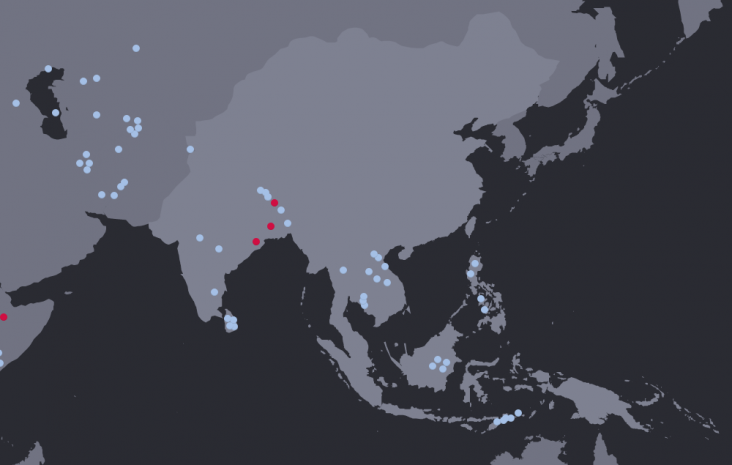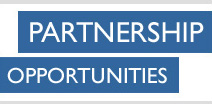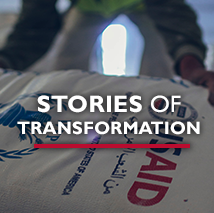Speeches Shim
Follow us on Twitter
How Asia develops is critical to U.S. economic and security interests. A leading U.S. export market, Asia is projected to remain the world’s fastest growing region through the next decade, presenting tremendous untapped market potential. Yet, at the same time, Asia grapples with immense development challenges -- including COVID-19 -- that threaten to derail this promising future.
USAID plays a vital role in partnering with the countries of Asia to ensure that these development decisions help realize their long-term success and move them forward on their journeys to self-reliance. USAID defines this end-goal as the day when they are able to plan, finance and implement solutions to solve their own development challenges. We help foster inclusive and equitable growth, promote and strengthen democratic institutions, and improve natural resource management, all of which are key to helping partner countries achieve sustainable self-reliance. USAID assistance helps shape a more stable and prosperous Asia region, and advances U.S. security and economic priorities, including those outlined in the National Security Strategy, Indo-Pacific Vision, Central Asia Strategy, and South Asia Strategy.
Despite the region’s growing wealth, income inequality across much of Asia is rising, further entrenching the nearly half of the world’s extreme poor who live there. Countries are constrained by weak regulatory environments, unsustainable debt, lack of infrastructure, and corruption — conditions that impede the power of enterprise-led development and undermine the long-term stability of our partners.
Asia is also experiencing a wave of closing democratic space, rising autocracy, and increasing religious intolerance. Instability, conflict, and violence that plague some places render any development progress fragile. Asia’s natural disasters — which number more than any other region of the world — frequently test the resilience of millions upon millions of the world’s most vulnerable. Furthermore, Asia remains a hotspot for emerging pandemic threats; widespread illegal trafficking helps fuel transnational crime and terrorism; and severe natural resource degradation threatens livelihoods and food security.
Across the region, we aim to achieve results:
-
In support of a free and open Indo-Pacific, USAID works to enable the environment for trade and investment that levels the playing field for legitimate market entrants and unlocks the power of enterprise-led growth. Long-running USAID support has helped Vietnam achieve remarkable improvements in its business and investment climate, including jumping 10 places in the World Economic Forum’s 2019 Global Competitiveness Index—making it the most improved country of the year
- In support of a free and open Indo-Pacific, USAID helped the Government of Nepal to roll out a system for planning and spending public funds that is accessible online to the public. As a result of USAID’s assistance, use of the new software by local governments increased by 92 percent during the 2018 to 2019 timeframe—contributing to greater accountability and transparency as Nepal continues its transition to a federal democracy.
-
USAID will continue to support the South Asia Strategy, which seeks to bolster stability within the region, reaffirms the commitment of the U.S. to Afghanistan, and highlights the importance of Afghanistan’s stability to U.S. national security. As the American relationship with Pakistan pivots towards emphasizing trade with the United States over aid, USAID will support private-sector led growth while continuing to support stability in the strategically important tribal areas along Afghanistan’s border.
- We are deepening our strategic partnership with India in support of its emergence as a regional and global leader contributing to shared peace and prosperity. We work together to advance Afghanistan’s economic integration with South Asia. Since 2017, we have hosted three annual trade shows with the governments of India and Afghanistan that resulted in an average of over $30 million each year in confirmed deals between Afghan and Indian businesses, primarily in agriculture goods.
- To help drive economic growth and increase stability, we are advancing regional connectivity of the South and Central Asian countries, for example in energy. USAID plays a leading role in driving efforts to strengthen and connect the power grids in hydropower-rich Tajikistan and the Kyrgyz Republic with Afghanistan and Pakistan to alleviate electricity shortages, create jobs and generate needed revenues from energy exports and transit fees. Our efforts reached a milestone in May 2020 with the finalization of the project’s tenth and final construction contract, thus completing the procurement phase.
- To help countries progress toward greater self-reliance, we are prioritizing efforts that strengthen country capacity and commitment to plan, finance and implement solutions to solve development challenges. This includes a focus on improving the reach, quality and relevance of health and education systems, which are crucial to boosting household and national wealth and driving inclusive growth.
- On Health: In the Kyrgyz Republic, as a result of USAID support, between 2017 and the end of 2019, the rate of successful treatment of extremely drug-resistant tuberculosis, long considered a death sentence, increased more than six-fold, climbing from 10 percent to 64 percent.
- On Education: With USAID support, Cambodia’s Ministry of Education adopted and is currently scaling up nationwide a reading program for grades 1 and 2 that USAID developed and piloted between 2017 and 2019.
- On Mobilizing Resources: In the Philippines, USAID-supported investment forums held in 2015 and 2019 in three cities outside of Metro Manila together yielded more than $1.9 billion in private sector pledges—successfully spurring the development of secondary cities in support of inclusive economic growth.





Comment
Make a general inquiry or suggest an improvement.